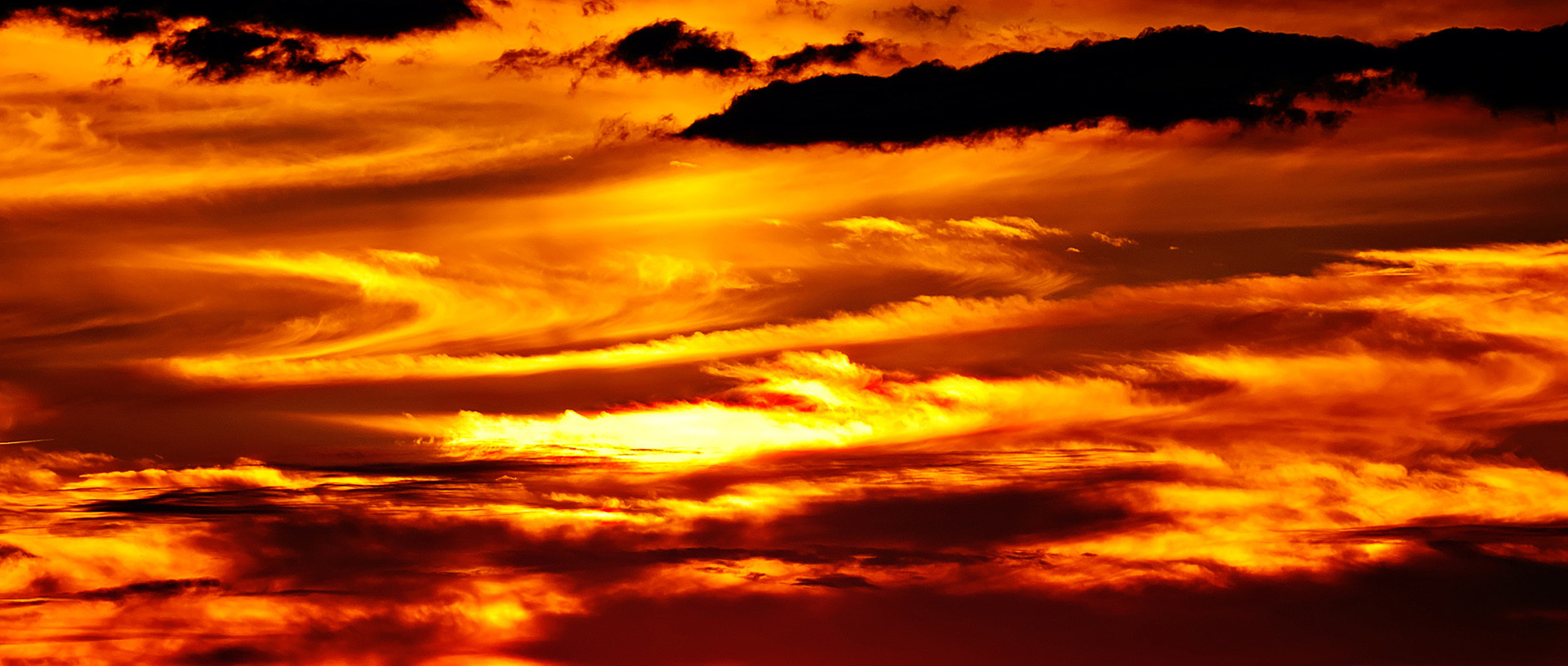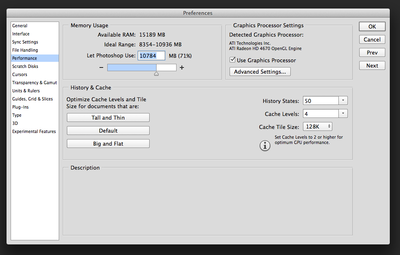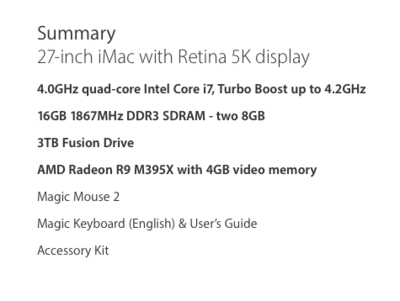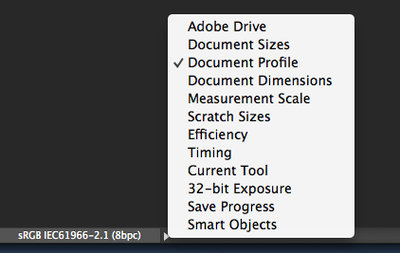-
Posts
4,093 -
Joined
-
Last visited
-
Days Won
49
Everything posted by Brian
-
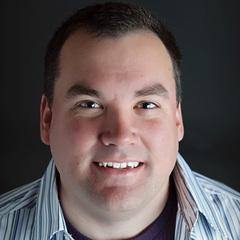
MacBook Pro - Photoshop - Lightroom Issues!
Brian replied to jsiegel's topic in The Macintosh User Group
Yeah, try setting the D810 to 24MP and see how that works. -

MacBook Pro - Photoshop - Lightroom Issues!
Brian replied to jsiegel's topic in The Macintosh User Group
Any luck @jsiegel? -
There are lots of options out there currently. It all depends on the amount of control that you desire. Some triggers just activate the shutter. Some are mostly wireless and others are directly connected to the camera. If you want to do time-lapse photography or to program the exposure for different intervals, you'll need something like a Nikon MC-36A Remote. Of course, with it being the Nikon brand, it's a lot more expensive. For a comparison, here is a Neewer Shoot Digital Intervalometer Timer Remote Control EZA-N1 that is less than $20. What's the difference? Without holding both controllers, I'd say resale value and durability is the main difference. Of course, this should be taken with a grain of salt, as Nikon triggers are just as easy to break as 3rd party triggers. The difference is they take a little longer to break. But for less $20...it's just $20 if it breaks or is forgotten out in the field. I've gone through about 3 third-party triggers in the last 9 years at about $20-$25 a trigger. The SMDV RFN-4s that you were thinking about looks interesting, but all that trigger does is activate the shutter. So you'll just need to count out your exposure times in your head, unless you just plan on setting the shutter for a 30 sec. exposure and calling it good. Here is the Nikon Wireless Adapter Set which is the OEM version of the SMDV RFN-4s. So it really boils down to how much you are willing to spend, and what you want the trigger to do for you. Since you are looking to do more Astrophotography and Northern Light stuff, I'd look more a the Intervalometer kind.
-

MacBook Pro - Photoshop - Lightroom Issues!
Brian replied to jsiegel's topic in The Macintosh User Group
I'm going to be away for the rest of the afternoon. Let me know of your results, and I will respond when I get back to my computer. Later! -

MacBook Pro - Photoshop - Lightroom Issues!
Brian replied to jsiegel's topic in The Macintosh User Group
Lower your Cache Tile size to 256K. History States should be 50. Check the Checkbox next to the My Book 4TB for a Scratch Disk. Let Photoshop use "22403," which is the maximum. Click OK. Restart Photoshop. Try editing things and see if it gets better. If not, turn off "Use Graphics Processor" and restart PS. Rinse and Repeat. If things still don't work, put things back to the way they were and restart PS. I might move this thread to the "Land of the Misfit Toys" for other people's input if things don't improve. Buying a new iMac will be the last option. -

MacBook Pro - Photoshop - Lightroom Issues!
Brian replied to jsiegel's topic in The Macintosh User Group
Click OK to save the settings. Now lets check your scratch disks. Are things being utilized correctly? Are all the HDs that are supposed to be used for Photoshop's Scratch Disk checked? In addition, you might want to UN-CHECK the "Use Graphics Processor" Checkbox and restart PS. While this setting is supposed to help speed things up, it also causes issues. So try turning it off and see if it makes a difference. If it doesn't, you can always turn it back on. -

MacBook Pro - Photoshop - Lightroom Issues!
Brian replied to jsiegel's topic in The Macintosh User Group
Now before you go spending $3100 on a new iMac, let's check PS Performance settings. Here is a screen shot of my PS settings, you might want to do some fiddling in there. Open PS, head to the Photoshop Menu and select Performance. You want to make sure your Memory usage is around 70% on your iMac with 32GB. Heck, aim a little higher at 75%. -

MacBook Pro - Photoshop - Lightroom Issues!
Brian replied to jsiegel's topic in The Macintosh User Group
Stay on Mavericks. You have enough problems as it is. El Capitan is a whole other can of worms. DO NOT UPGRADE. MacKeeper is EVIL!!! It causes all sorts of problems and that is one program that I avoid at all costs. MacKeeper promises to do all sorts of things and scan for viruses etc. It's a bunch of BS. Plus, it stores logins and passwords from your computer on its servers. I ask, why does MacKeeper need my login info for my bank and other secure things? Things that make you go, "Hmmm..." Just Google "MacKeeper Problems" and a bunch of results will popup. Like I said, MacKeeper is the "Spawn of the Devil." I would un-install it. Like now. I think it's the 414 MB file size that's killing you. So at any given time, you could have a Gig or two of RAM dedicated to photos. Then add LR & PS, then Word, all your plugins, fonts, brushes loaded into memory...and you have a unhappy Mac on your hands. The reason that the iMac seems to be better, is it has 32GB of RAM and more horsepower overall. I hate to say this, but you might be looking at buying a high-end iMac as a solution. You don't need the Mac Pro, but you do need a "Superfast iMac." I'd head to Apple.com and start with the $2299 iMac. Bump up the CPU to 4.0GHz Increase the RAM to 16GB Choose the 3TB Fusion Drive Choose the AMD Radeon with 4GB of Video Memory You should be at $3099 before the cost of AppleCare. Why only purchase 16GB from Apple? Because you are going to buy a RAM kit from Crucial.com to bump it up to 32GB for less than $100 instead of paying $600. Why the 3TB Fusion Drive instead of the 1TB Flash Drive? Because a filled 1TB Flash Drive isn't going to do you any good. You have a D810 and large files are a part of the game. Of course, you could get a Thunderbolt 2.0 EHD with 6TB of space, but that's going to cost you an extra $1000, conversationally speaking. I'm trying to protect your wallet. -

MacBook Pro - Photoshop - Lightroom Issues!
Brian replied to jsiegel's topic in The Macintosh User Group
I'm thinking if you have 400-500+ MB image files, times that by the number you have open...is causing your issues. This is why I jump up and down so much when it comes to the D810. It's a fantastic camera, produces awesome images, but you N-E-E-D the infrastructure in place to support those huge files. -

MacBook Pro - Photoshop - Lightroom Issues!
Brian replied to jsiegel's topic in The Macintosh User Group
I'm wondering if it's the plugins? Some plugins can really take up system resources. Not sure if the brushes do anything either. But since the problem started when you upgraded to your D810, we might want to start there. Oh, I wouldn't load Word until we figure out what is causing the problem. It's system resource related, that's for sure. By default, Raw files are 77MB...each. So if you are using a lot of actions that duplicate the pixel layers and then flatten, duplicate, do stuff, then flatten...it's possible that your images are ballooning in size. Also, how many images do you typically have open at once? Do you do a lot of batching? Another thought, do you have any other software loaded, like the Devil's Spawn, also known as "MacKeeper?" Mac Pros are EXPENSIVE. Believe it or not, Photoshop runs SLOWER on a Mac Pro than a high-end iMac. LOL!! The reason is, just like Photoshop isn't programmed to take advantage of the Mac Pro's architecture that makes it so fast. If you were doing video, animation or even music mixing and such, THEN you need a Mac Pro. Let's start out with one image. Write down the Raw file size then do you usual edits in LR. Then import it to Photoshop and do your normal edits. Save the .psd file. Then check the file size. You could also switch to a "Document Size" view to see how large the .psd file is. For example: Just remember to change it back to "Document Profile." -
A work around is to use a flash, like a 580 ex II that uses a IR beam to aid in focusing. What you do is point the thing straight up, set it to manual and use the lowest power setting possible. Granted, it's not the ideal thing to do, but it works. Either use the IR beam or have a small flashlight on hand.
-
The 2412m has been discontinued, but is still available. It's a good monitor. B&H has it for $240. You want to use the DVI cable that comes with the monitor.
-
If you edit video or play video games, get the i7. If all you plan on doing is using Photoshop and the like, the i5 is fine. The reason is, the software package has to be programmed to take advantage of the i7's features that make it faster. Photoshop doesn't. There is only about a 5% - 10% boost with going with a i7 over a i5 when it comes to PS. Windows 10 is fine for computers that come with it. It gets messy when you upgrade. If you can get Win 7 Pro 64-bit, go for it. If you get Win 10, it's fine for the most part. Windows 7 will be taken behind the barn and shot dead around 2020. Meaning all support and patches will stop. Just like Win XP. That's about 3.5 years away. So Win 10 looks to be the best option going forward. But I get what you mean. i would get extra RAM from Crucial.com and bump it up to 32GB before I'd spend the money on the i7 option. But that's your call.
-
I think Apps are treated differently than data. It's like they are in a different folder in the iOS. I've seen this happen before and it seems to be normal. Believe it or not, you can also have apps installed on a Apple Device that were purchased by another account. We won't go there though, that is one slippery slope. What I've done in the past is not touch any new iPhone until it is restored. This way you don't put yourself in the position that you are in.
-
I've got nothing.
-
I don't have an unlimited budget to try out these devices. I just go by my own personal experience and what I know. That WD unit that was listed in the other thread was when I first discovered it. Looking at it again did increase my interest. Especially since I saw a future model coming with 8TB drives. RAID is just one option out of many. It depends mainly on your overall backup strategy. Most people don't have RAID and are fine.
-
Recovering photos on a iPhone is almost impossible. Apple has created a work-around with a "Recently Deleted" Album as a way to cut support calls down from panicked customers. So check your "Albums" in your Photos App. Look for recently deleted. It's a long shot.
-
I think that's just a default iPhone thing. The restore puts back your data and old Apps on your new phone. Now I'm sure you are asking why it didn't leave your new photos alone? "Just because..."
-
Short answer: Probably not. Those files that you took before the restore are probably gone forever. Unless you had your phone synced with the iCloud. For that, you would have had to key in the login / password info when you first got your phone, AND had enough room on Apple's Servers AND had the photos set to automatically backup to the iCloud. Many people never purchase the extra capacity, so they are stuck at the 5GB free account level, and new photos never get backed up because the free iCloud account is full. There are programs that view the images in the MobileSync Folder, so there MIGHT be a razor thin chance you can get stuff back, but I'm 99.999999999999999999999999999999999999999% sure you won't be able to. That said, you might want to try this program. It seems that they have a free version, but in my experience, if you want to have the full features, or the ability to recover data, you have to pony up the $$$ and purchase it.
-
@mistyprochaska: I'm truly sorry. I was a bit of a Major Ass earlier today. I really shouldn't answer questions on my phone. Especially when battling a Server that was being stubborn which was causing me to be very grumpy. So let's start over! I never did answer your question about your 2011 Mac properly. I'm running a 2009 iMac myself, and it works fine. I also am still using a D300s with the same lenses. So it's still around the 2010-era for me. I do have 16GB of RAM installed, which has helped. So if you have a camera like me that's a bit dated, you should be able to keep running your Mac until it dies. It does sound like you are doing everything "correctly," CleanMyMac, Onyx, etc. The only thing I can assume is you have a full mac desktop, along with a LR catalog that has way too many photos...those things KILL performance. As I've said earlier, adding RAM from Crucial is a good thing and you should be able to take it up to 16GB of RAM. So if you are like me, using the same camera from a few years ago, you can keep going. That said, if you do upgrade to something that has 24MP or larger, then that might cause issues. For example, if you upgrade from a Nikon D90 to a D810. Your Mac will not like that change. Neither will your externals. Now, here is the fun part. You'll get mixed answers in this dept. The rule of thumb that I've come up with is if your 2011 iMac has a built-in DVD SuperDrive, you can go up to 16GB. If it doesn't have a DVD Drive and it's one of the "newer" styles (from 2012-present) you can go up to 32GB, ONLY IF you have the 27" model. The 21.5" models go up to 16GB, even though Crucial themselves might state otherwise. This info I've come across from Apple's literature over the years. This Western Digital MyBook Pro comes with "Caviar Black" Hard Drives. I've owned these hard drives for YEARS. The run fast, run cool, and are extremely reliable. They are the ONLY internal HD I will recommend or install into my own equipment. In fact, I've made my own externals (Like my Time Machine HD) that contains a WD Caviar Black 1TB drive. Bought it in 2009. Works fine in 2016. Unlike a lot of the "off-the-shelf" EHDs, these hard drives are kinda like the "Canon 5D Mark III" of the world. They aren't the low-end "Green" Drives which tend to drop like flies when you need them. Often, you will find the lower-end "Eco-Friendly" or "Green" Drives in many externals. You will have to seek out the "Pro-Grade" or "High-Grade" Hard Drives. The reason is the "Green/Eco-Friendly" HDs are cheap to produce, combine them with a crappy external case, and you can sell a EHD with a very high profit-margin. People eat those drives up. "$79 for a 2TB EHD!! Great!! I have 6 sessions that I need to download!!!" Uh-huh. Que the panicked photographer six months from now who can't get to their photos. Let's talk about RAID...again. Thanks for reading over the other thread. For the majority of the people on this website, RAID 1 is fine. You have the benefit of instant real-time duplication of your files from one to the other. That's the nice part about RAID 1. The downside to it, is if your file is somehow corrupted on Drive A that corrupted file is automatically corrupted on Drive B. So in reality, think of RAID 1 as your typical external that you are used to, with the added benefit of having things automatically duplicated in real time. That small chance of something going horribly wrong in between your duplication session is non-existent. For example, having a EHD fail on a Monday before your weekly duplication on a Thursday. With RAID 1, stuff is copied in real-time. How does this work with Cloud Backup? In a word: Speed. Once you replace the failed HD, the working HD in a RAID 1 automatically copies stuff over. That said, this depends on the RAID Device and the software. Sometimes you have to tell it to start the rebuild. Other times it does things on its own. You'll have to read the manual on this one, I'm afraid. Now I'm sure you are wondering why I said speed. After all, people have fast internet connections these days. Why not simply download the file in a few seconds? I would say that's true. You have to remember that RAID has been around for a long time. The Cloud didn't really start until 2011. So you have older-based technology, which is proven. Keep in mind that Cloud Backups tend to vary on how long they keep things on their servers. Some will delete files monthly, others will delete files if you delete them locally on your HD. So it's one of those things, read the fine print. Not all Cloud Storage Vendors treat data the same and I'd hate for you to get a nasty surprise. As for that WD External RAID, it looks really interesting. I like the fact that it has WD Caviar Black Drives and they are hot swap hard drive caddies. What that means is you can pull the HD while the thing is powered on, replace the failed HD and have it rebuild the RAID. Most of the Servers that I build use this technology. It's awesome. I think you also had a question about Drobo. Drobo is Drobo. It was one of the first NAS (Network Attached Storage) systems geared towards the average user. Their devices are extremely easy to setup. I haven't looked at their models recently, the reason is it's a software-based RAID, and "Their Version of RAID," rather than an industry standard system. That's why you can mix and match different hard drives in a Drobo. A 1TB Drive and a couple of 2TB drives with a few 500GB HDs can be installed in a Drobo and it creates a "RAID." Traditionally, you had to have ALL of the HDs in a RAID be the same, or have the same capacity across the board. No mix-and-matching. So for that feature, you are paying a premium. That said, you end up paying the same amount in the end if you went with multiple high-quality HDs that were the same type/capacity/model number for stability. In addition, Drobos used to have proprietary power supplies, so if it died out of warranty, you would have to pony up the $$$ to get access to your data. There was a big situation years ago that Scott Kelby went through that really caused an uproar. I'm not sure if Drobo changed things or not. For me, it wouldn't be a big deal. If a Drobo used a standard 3-prong computer cord, it still would have a proprietary power supply in the damn thing. Just like some computers. So, hopefully I answered your questions. Any more, send 'em my way. I'd be happy to help.
-
"So is there an advantage in going with the WD RAID you posted and using it as RAID1, vs. having two seperate hard drives and replicating the data on one to the other regularly?" Advantage is things get copied from one HD to another in real time, rather than weekly or monthly, etc. "What about Crashplan or something similar? Is that overkill?" No. Having a off-site backup is part of a thorough backup plan. What happens in case of Earthquakes, Fire or Floods? Sometimes floods aren't caused by rivers and streams, they are caused by a failed sump-pump or broken pipe in the ceiling.
-
It depends on you personally if you want a RAID 1 or not. RAID 0 is great if you edit video and need a spot for cache files. Otherwise, go RAID 1 or RAID 5. The G-Drive is just like you are doing things now. The one I linked to contains a higher-end HD. The WD RAID is also a good choice and having things automatically duplicated gives peace of mind if something goes wrong. I can't make this decision for you. It's a personal thing. The RAID drive will also show up as one HD, not two. Personally, I think the next EHD will be a RAID unit of some sort. The G-Drive will eventually become my Time Machine Drive.
-
I'd export the whole catalog and start fresh. A catalog that large is extremely dangerous, and WILL kill performance. Onyx doesn't do a whole lot in terms of performance. What it does is nice, but it's not extraordinary. If you haven't upgraded to 16GB RAM by now, you should. That will give you a performance boost. Especially if you are at 4GB. CleanMyMac does more than Onyx, but it really keeps the crap in cache files in check. For performance these three things are what you are after: 1. Clean Desktop 2. 16GB RAM or More 3. HD that has at least 25% free or more. Those three things will give you performance. CleanMyMac helps with #3. The problem is, it's not your file organization. It's the LR catalog. They way you are doing things is great if you used Adobe Bridge. But that's a whole other topic. You might want to get into the habit of creating catalogs based on theme or job. For example, the "Smith-Jones" wedding gets its own catalog. The Fall Mini 2016 Sessions get their own catalog, the Spring Mommy & Me sessions get their own catalog etc. Store the catalog with either the Raw files or edited .psd files. Kill the JPEGs. You can always recreate JPEGs from the edited .psd files. JPEGS do nothing but eat space after exporting / uploading a job. Whatever you do, don't go above 10,000 in a single catalog.
-
142,093 photos. In a single catalog? ::: FACEPALM ::: You have been given bad advice. Those people that said that its ok to have that many in a LR catalog should find the closest tree and apologize to it for stealing the oxygen it produces. Just because you can do something, doesn't mean you should. 10,000 photos, fine. One hundred forty-two thousand? Yeah...LR will come to a screeching halt.

